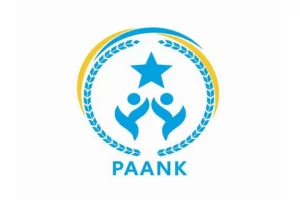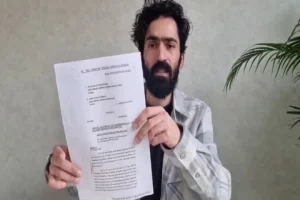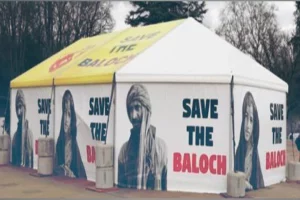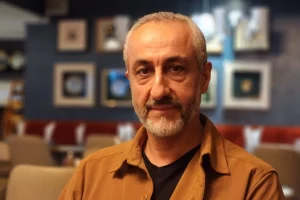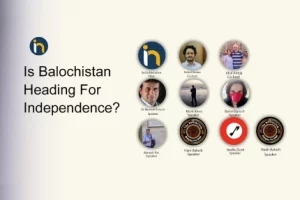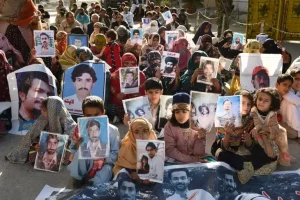A string of strikes and counter strikes between Baloch insurgents and Pakistan’s security forces has shifted the spotlight back on the Baloch freedom struggle, particularly so in the changed dynamic post-Taliban 2.0 takeover in Afghanistan.
On the night of 25/26 January 2022, Baloch Liberation Front attacked a security forces' check-post in Kech district in South-western Balochistan, near Gwadar, killing at least ten security personnel.
Even as the Prime Minister of Pakistan assured the people on 28 January, that he will "rid Pakistan of all forms of terrorism", within a week, on February 2, two bases of the Frontier Corps in Balochistan’s Naushki and Panjgur districts came under attack; 9 soldiers and 20 insurgents were reportedly killed. Statement from the Baloch Liberation Army (BLA) called Pakistan ISPR’s statement that the Army had repulsed the attack as a “a complete lie” and put the casualty count at 100 Pakistani soldiers. In a counter stroke on 21 February, Pakistan security forces killed three insurgents in the Tully area of Sibi district in Balochistan.
Balochistan is Pakistan’s largest, most resource rich and least populated, but poorest province. Balochis consider themselves as a separate people and their struggle for statehood pre-dates India’s independence and partition. The Baloch province witnessed insurgencies in 1948, 1958, 1963-69 and in 1973-77.
The sense of alienation amongst the Baloch people is deep-seated. Aggravating the historic and ethnic differences, is inequitable resource distribution by the federal government of Pakistan. According to Pakistan’s Bureau of Statistics Census 2017, Balochistan with an area of 347,190 sq km measures 44 % of total area of Pakistan. The population of Balochistan is 12,344,408 which is 6% of the total population of Pakistan. Prior to 1971 – the year of liberation of Bangladesh, Pakistan’s federal government revenue allocation policy was based solely on land mass or area. Erstwhile East-Pakistan opposed this criteria tooth and nail because while it generated more revenue, it received disproportionately less federal share because of less land area. Interestingly, post the secession of East Pakistan, the criterion was changed from landmass to population, Balochistan being the least populated even though largest by size, became the biggest loser. In 2009, a multiple criteria formula was introduced to include poverty, revenue generation and population density as determining factors, but population remained the dominating factor with 82% determinant value.
A protest rally has been recorded in front of the Quetta press club against the recent illegal crackdown on Baloch people by the security forces.
Higher authorities should play their role to stop Human rights abuses in Balochistan. pic.twitter.com/qLetq9Mnmc— Baloch Yekjethi Committee Shaal (@BYC_Shaal) February 22, 2022
There is a strong sense of discrimination amongst the Baloch people. Inadequate representation in the federal government, absence of Baloch in federal and even provincial and local government official positions, are sources of discontent. Most managerial and technical level jobs are offered to those from “outside Balochistan”, while local Baloch are engaged in “low-end jobs as day laborers”. Despite constitutional provisions that “the province where natural gas is situated would have priority in receiving supplies of that gas,” Balochistan has been deprived of its due share. According to Pakistan UNDP report 2017, Balochistan has the highest poverty headcount of 71% in Pakistan.
After the crushing defeat in 1977, the Baloch insurgency revived in 2002-3, triggered by the Gwadar port on the Arabian Sea, close to the Strait of Hormuz. Following the visit of Chinese Premier Zhu Rongji to Pakistan in May 2001, an agreement was reached between China and Pakistan for construction of the Gwadar port. The ground-breaking for the port was done by Pakistan President Pervez Musharraf and China’s Vice Premier Wu Bang Guo on 22 March 2002.
The Gwadar port, showcased as the gateway to a new era of magnanimous Chinese investment to improve the fate of both Pakistan and the region, meant little to the Baloch people, who had seen decades of misappropriation of Balochistan’s on-shore and off-shore resources by the federal government of Pakistan. Sardar Akhtar Mengal, a Baloch politician, aptly sums up the ethnocultural opposition to the Gwadar project, “The problem is that one Karachi in Gwadar is sufficient to turn the whole population of Balochistan into minority. We would lose our identity, our language, everything. That is why we are not willing to accept these mega projects.”
Through 2002-4, there were a spate of attacks on gas pipelines, power lines, railway tracks, bridges, telephone exchanges. In May 2004, eleven Chinese engineers working on Gwadar port were attacked.
Watch snippet of an Interview of Brave Baloch leader Nawab Khair Bakhsh Marri sahab, where without mincing any words he reminds #Pakistan of its true worth, in simple words 'aukat yaad dila di'..@majorgauravarya @hyrbyair_marri @FaizMBaluch @TarekFatah @VeengasJ @husainhaqqani pic.twitter.com/Po2acvIJgb
— Sajeda Akhtar (@Sajeda_Akhtar) July 3, 2021
Pakistan’s federal government launched the next round of counter insurgency operations in December 2005, ostensibly as a sequel to rocket attacks on Kohlu town on 14 December 2005, when President Pervez Musharraf was on a visit to lay the foundation stone a new cantonment. Pakistan Army supported by Pakistan Air Force jets, armed helicopters and artillery were employed to target strongholds of Baloch nationalists in Kohlu and Dera Bugti districts. Under sustained military pressure, the intensity of the insurgency declined.
The next jolt to the Baloch was the China-Pakistan Economic Corridor (CPEC). In 2015, China announced the CPEC, a $46 billion (later revised to $62 billion) infrastructure network, linking Gwadar port city to China's western Xinjiang region. CPEC includes plans to build road, rail and oil pipeline links running though Balochistan to improve connectivity between China and the Middle East. By integrating CPEC with the Belt and Road initiative (BRI), China aims to expand its influence in Pakistan and across to West, Central and South Asia.
Baloch nationalists like Miran Baluch describe the CPEC as “an occupation of Baloch territory”. Balochistan Liberation Front (BLF) have vowed to target the corridor, calling it an “imperialist scheme”– a “China-Pakistan nexus to loot Baloch resources.” In August 2018, a suicide bomber targeted a bus carrying Chinese engineers in Dalbadin, Balochistan, wounding five people, including three Chinese nationals. In November 2018, a Baloch insurgent group claimed responsibility for an attack on the Chinese consulate in southern Karachi city, killing four people. In May 2019, the Pearl Continental hotel in Gwadar, was attacked killing five people and injuring six. In June 2020, armed separatists raided the Pakistan Stock Exchange, where three Chinese companies at the time owned 40% of the stakes.
Pakistan’s strategy of using Islamist militants to defeat Baloch insurgents seems to be misfiring as attacks on security forces have increased. According to the South Asia Terrorism Portal (SATP), overall fatalities in Balochistan increased from 215 in 2020 to 311 in 2021, up by 44.65 per cent. 105 security forces fatalities were recorded in Balochistan in 2021, as against 94 in 2020. The 2021 figure is the highest in the last five years. According to open sources, 36 security forces personnel have been killed in the province in multiple incidents in the first month and a half of 2022.
Beijing has been pushing for both investment and security guarantees from Pakistan to enable smooth progress of CPEC projects. Imran Khan’s National Coastal Development Authority (NCDA) for the Gwadar port was severely criticised by opposition parties and activists from both Balochistan and Sindh on the grounds that it favoured China, by usurping provincial rights. Pakistan has increased the number of security personnel in Balochistan manifold. But the tightening of security provisions has backfired due to increasing local resentment and caused wariness amongst potential investors.
Some inferences could be drawn from the deteriorating situation. First, Pakistan’s hopes that Taliban control of Afghanistan would help in diminishing the insurgency in Balochistan, seems to be getting disproved. Second, emboldening of the Tehreek-e-Taliban (TTP) is worsening the situation for Pakistan’s federal government. Even though the TTP and Baloch insurgency are ideologically different, their animosity towards the state of Pakistan gives them common ground. Fourth, TTP’s ties with Uyghur groups and TTP attacks on Chinese assets complicate the situation for China and Pakistan further. Fourth, timing and intensity of the latest round of attacks on security forces is significant as it coincided with Imran Khan’s visit to Beijing for the opening ceremony of Winter Olympics. The strategic message to Islamabad as well as Beijing is clearly about Baloch opposition to the CPEC. The attacks may not have the ability to stop CPEC activity through Balochistan but can certainly deter larger commercial investment in the province. Fifth, Pakistan’s grand designs of a secure western front and release of resources for ventures in the East against India are dashed for some time.
Pakistan’s standard reaction of blaming India for supporting Baloch insurgents, neither has many takers, nor does it help improve the situation on the ground. Rather than pointing fingers at neighbours, Islamabad needs to change its course to deal with the culprits and the mess within.
(The author is former Deputy Chief of Army Staff and Kashmir Corps Commander, and Member, National Security Advisory Board)
Also Read: New Baloch National Front raises morale for an independent Balochistan







